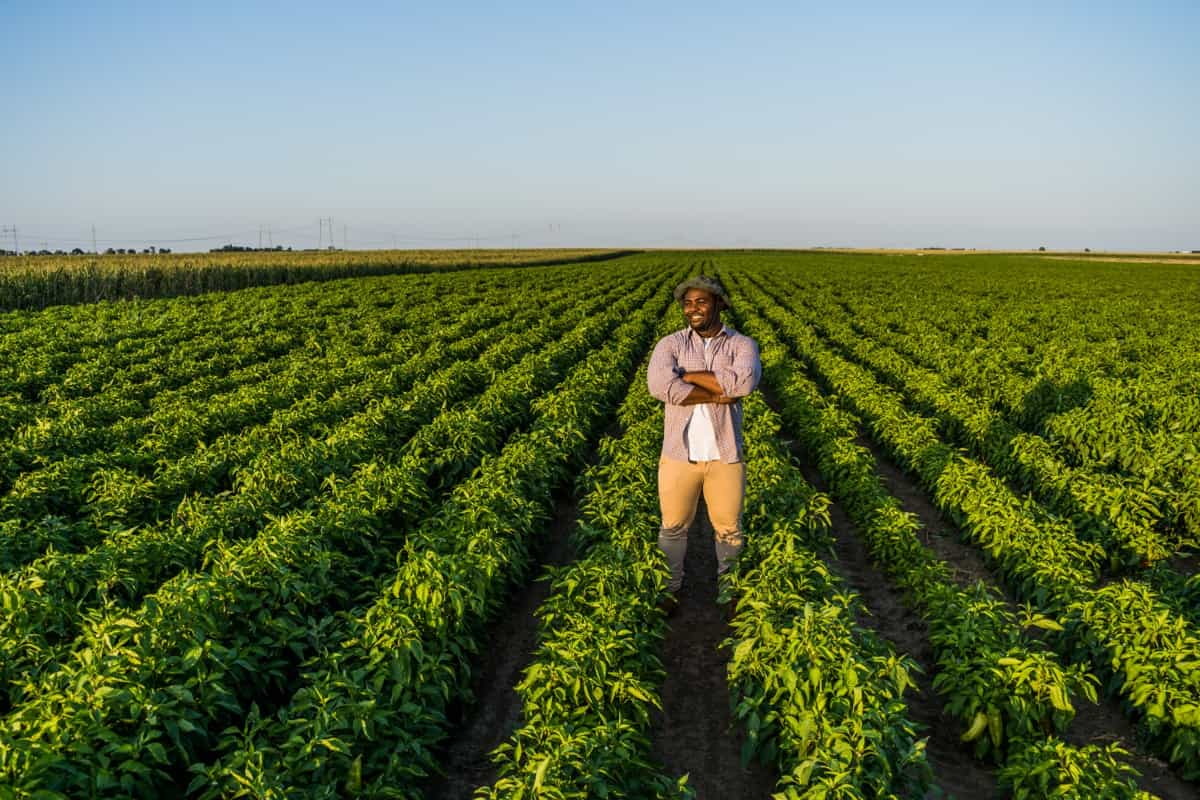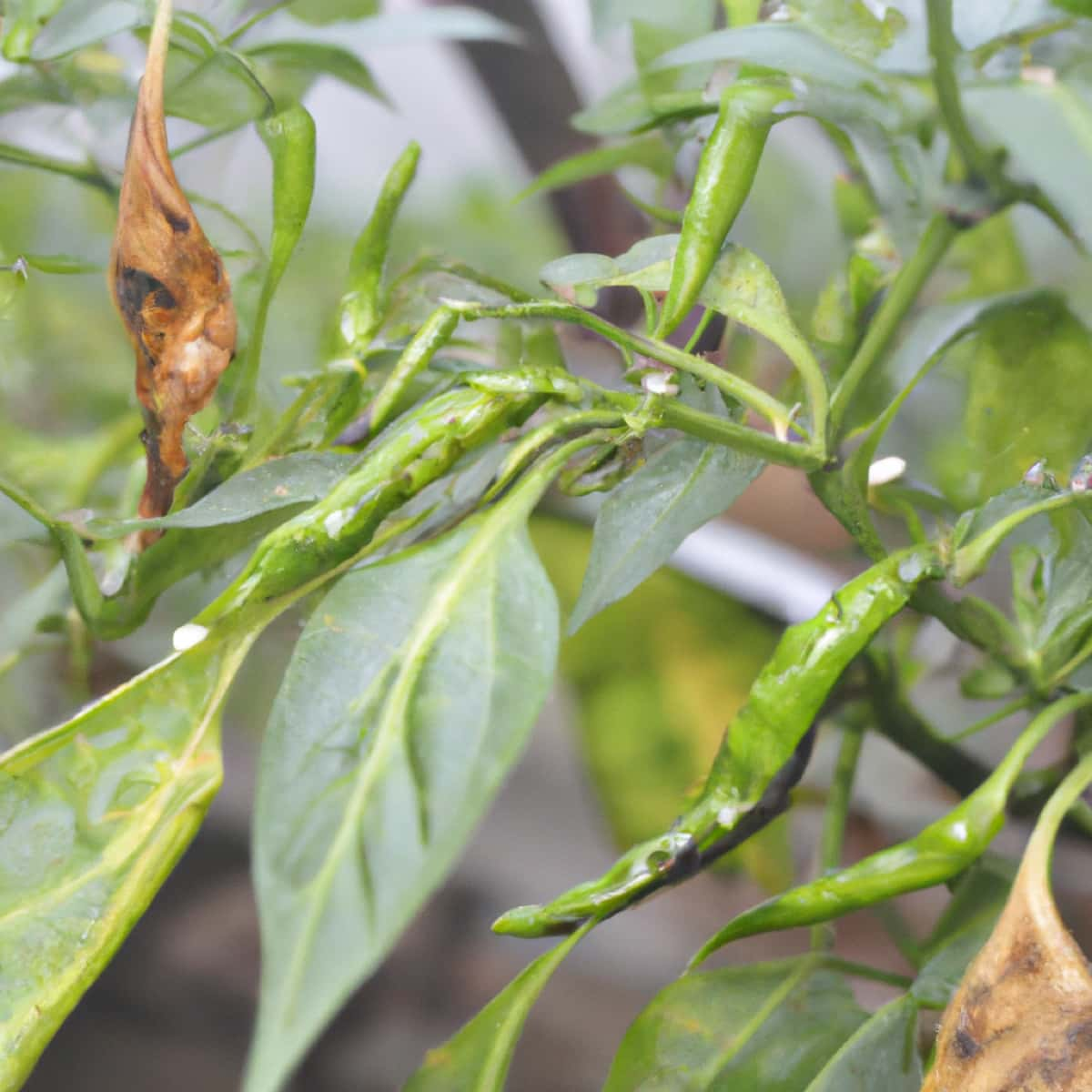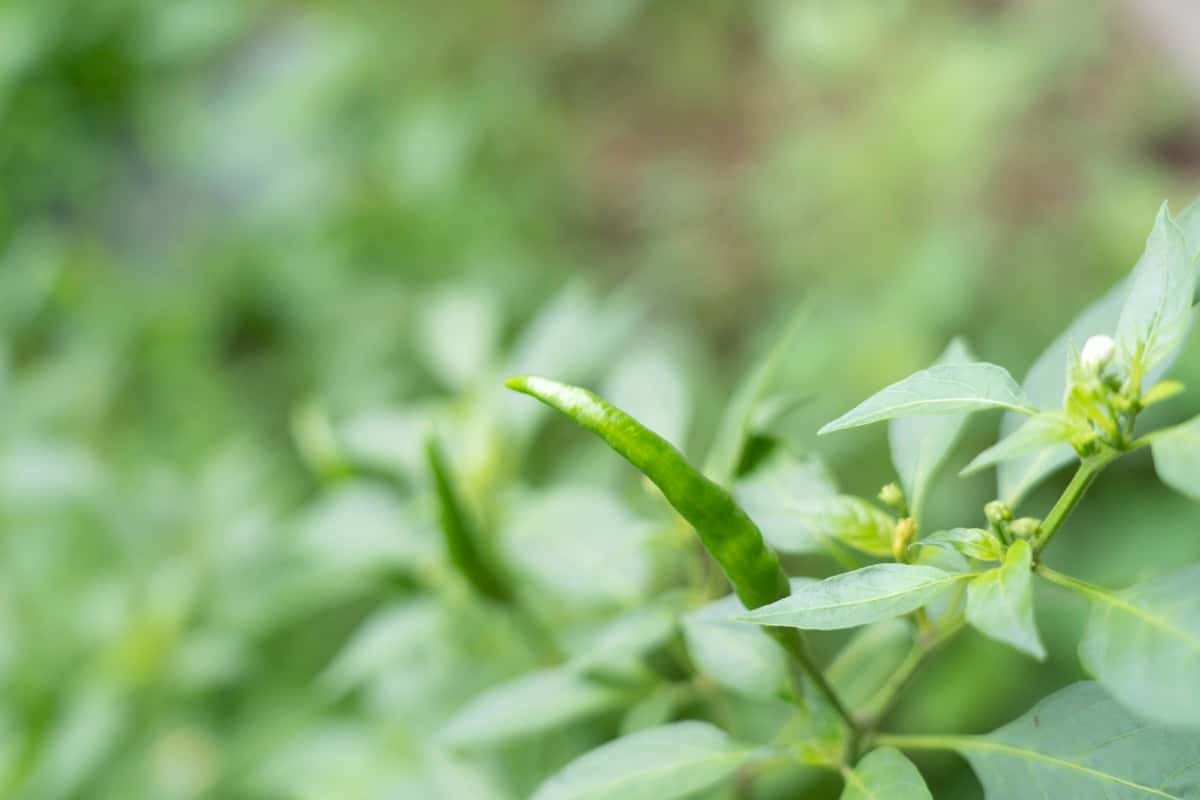Damping off is a common fungal disease that affects the seedlings of chili plants. It is caused by various species of soil-borne fungi that thrive in warm and moist conditions. The disease attacks the stem and roots of the seedlings, causing them to wilt, collapse, and die. Damping off can occur at any stage of plant development, but it is most common in young seedlings.

Chili damping off needs adequate hygiene and culture media. Disease-free seeds, clean growing soil, and proper watering and ventilation will prevent damping. Damping off can be reduced by not overwatering, spacing plants, and fertilizing with nitrogen. Chili damping off can be managed with fungicides and biological control agents. Fungicides can control the disease if used properly. Trichoderma spp. can prevent damping off and promote plant growth.
Damping Off Management in Chilli/Peppers
Cause/Pathogen of Damping Off
Damping off is a fungal disease caused by various soil-borne fungi, including Pythium aphanidermatum, Pythium spp., and Rhizoctonia solani. These fungi thrive in warm, moist soil conditions and attack the stems and roots of seedlings, causing them to wilt, collapse, and die. Stressful conditions such as water-logging or high nitrogen application weaken the plants and favor the disease’s development. The disease can be spread through contaminated tools or equipment and mud on clothes or shoes.
The Disease Cycle of Damping Off in Chilli
Damping off is a fungal disease affecting chili plants during the initial growth stages, especially young seedlings. The disease can survive in the soil as oospores in the case of Pythium or sclerotia in the case of Rhizoctonia. Under favorable conditions, such as irrigation water, the disease can spread through zoospores or mycelial growth in the soil. While the disease may not carry over from one season to another, it can appear suddenly and spread quickly, causing significant losses in crop yield.
Conditions Favorable for Damping Off Spread in the Field
- The disease thrives under specific conditions such as warm and rainy weather, excessively moist soils, and densely sown plants.
- Additionally, stressful conditions like water logging and high nitrogen application can weaken the plants and further promote the spread of the disease.
- Heavy rainfall, excessive irrigation, poorly drained soil, and close plant spacing are favorable conditions for damping off.
- For Rhizoctonia, the fungus responsible for damping off, high soil moisture with temperatures around 30-35°C is ideal for its growth and spread.
- Farmers should be aware of these conditions and take preventive measures to minimize the risk of damping off.
Damage Symptoms of Damping Off
- Reduced seed germination and poor stand of seedlings
- High seedling mortality, ranging from 25-75%
- Pre-emergence damping off, where seedlings disintegrate before they emerge from the soil surface.
- Post-emergence damping off, where the disease develops after seedlings have emerged but before the stems are lignified
- Water-soaked lesion formation at the collar region of the stem
- Infected areas turn brown and rot, leading to the collapse of the plant.
- In Rhizoctonia solani attack, infected stems become hard and thin, resulting in wire stem symptoms, and infected seedlings topple over.
- The disease appears in patches both in nursery and field beds.
In case you missed it: Management of Bacterial Leaf Spot in Chilli/Peppers: Symptoms, Treatment, Chemical, Biological, Natural, and Organic Control

Yield Loss due to Damping Off on Chilli
Damping off is a fungal cause disease that can cause significant economic losses for chili farmers. Studies have shown that the disease can affect anywhere from 5 to 80% of seedlings and result in yield losses of the same magnitude under favorable conditions.
Damping Off Management in Chilli by Cultural Method
- Use clean pots, trays, and soil to avoid introducing fungal spores to the planting area.
- Plant seeds at the appropriate depth and avoid overwatering, creating favorable conditions for fungal growth.
- Provide good air circulation by spacing seedlings appropriately and avoiding overcrowding.
- Use a well-draining soil mix to prevent water from pooling around the roots.
- Apply a thin layer of sand or vermiculite to the soil surface to discourage fungal growth.
- Maintain a consistent temperature and humidity level to prevent stress on the plants.
Damping Off Management in Chilli by Biological Method
- Use of Biocontrol Agents: Certain microorganisms like Trichoderma and Pseudomonas can be used as biocontrol agents to suppress the growth of the damping-off fungus.
- Treat seeds with Trichoderma asperellum or Pseudomonas fluorescens 24 hours before sowing.
- Apply Pseudomonas fluorescens to the soil and farmyard manure at a 2.5 kg/ha rate.
- Biofungicides based on fungi Trichoderma viride, Beauveria bassiana, or bacteria Pseudomonas fluorescens and Bacillus subtilis effectively prevent and control damping-off in chili plants.
- These bio fungicides can be used as a seed treatment or applied around the root zone when planting.
- They work by colonizing the root zone and competing with fungal pathogens for nutrients and space.
- These bio fungicides can improve plant growth and yield by promoting healthier root systems.
Damping Off Management in Chilli by Chemical Method
- Using fungicides preventively can be effective in fields with a history of damping off or poor drainage.
- Seed treatments with metalaxyl-M can control the pre-emergence form of damping off.
- Foliar sprays with captan 31.8% or metalaxyl-M 75% can also help, especially during cloudy weather.
- Soil or the base of plants can be drenched with copper oxychloride or captan every two weeks starting from planting.
Damping Off Management in Chilli by Organic/Natural Method
Homemade Solutions: Plant extracts of Eupatorium cannabinum effectively inhibit the growth of the damping-off fungus. These homemade solutions can be easily prepared and used for treatment. Biofungicides are a natural and organic alternative to chemical fungicides and are safe for food crops.
Preventive Measures for Control of Damping Off
- Use seeds from healthy plants or certified sources, and consider using resistant varieties if available.
- Use raised beds in areas with poor drainage or wet soil.
- Space seeds or seedlings further apart to promote drying of the canopy.
- Plant seedlings at the appropriate depth when transplanting.
- Remove infected plants as symptoms appear.
- Practice balanced fertilization with split nitrogen applications.
In case you missed it: Dieback and Anthracnose (Fruit Rot) Management in Chilli: Symptoms, Identification, Treatment, Chemical, Biological, Natural, and Organic Control

Conclusion
Damping off is a common fungal disease that affects chili plants at various stages of growth. Early identification of symptoms is key to effective treatment. Control methods include chemical fungicides, bio fungicides, and cultural practices such as proper seed selection, planting depth, and watering. Organic methods such as using natural bio fungicides and raised beds can also help prevent and manage damp off.
- Beneficial Insects in Pest Management
- Natural Solutions for Pest Control in Flower Gardens
- Types of Fungicides Used in Agriculture
- Common Issues in the Fruit Development Stage of Pomegranate Farming
- Fruit Development Issues in Papaya: Easy Solutions and Treatment
- Soil-Borne Diseases and How to Protect Your Plants
- Practices to Prevent Disease Spread in the Garden
- From Wilted to Thriving: How to Treat Root Rot Naturally in Houseplants
- Natural Remedies to Cure Brown Spots on Fig Tree Leaves